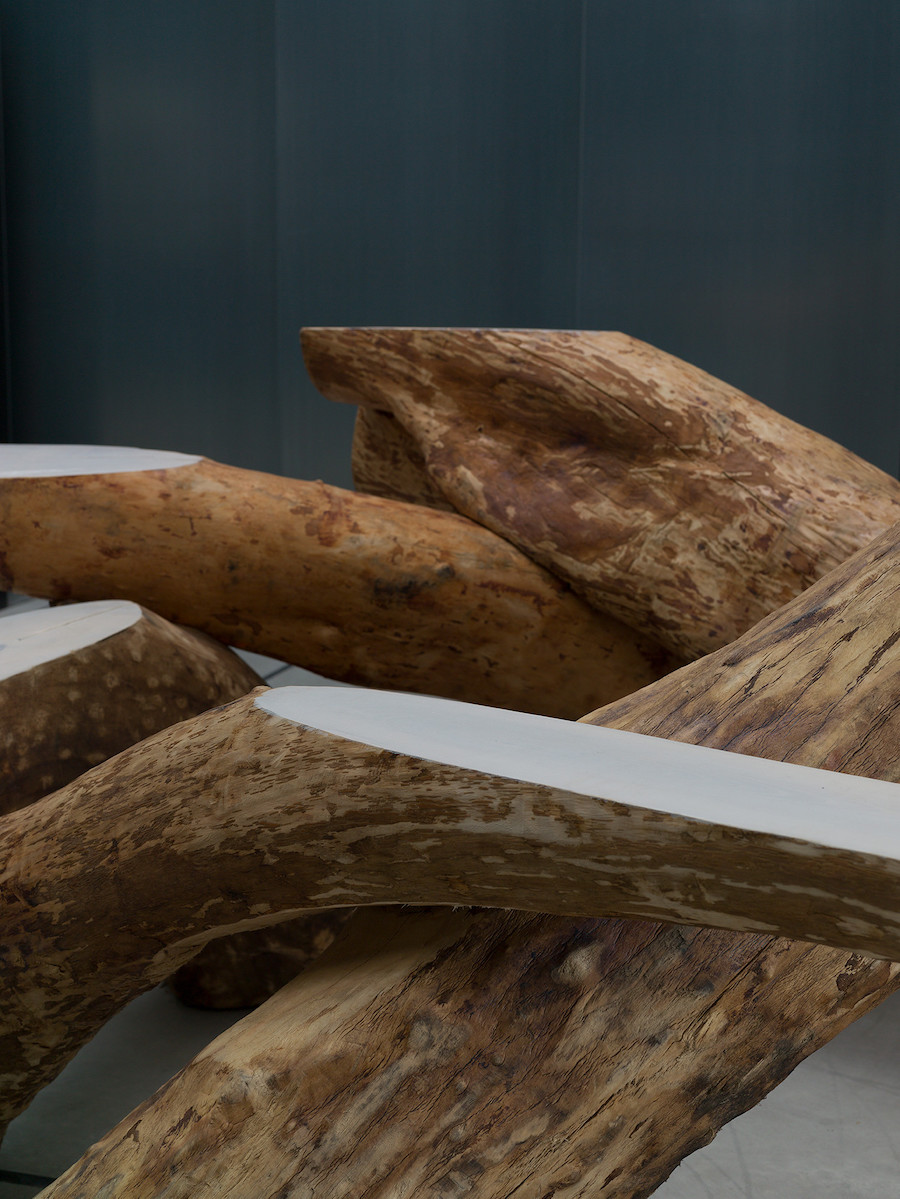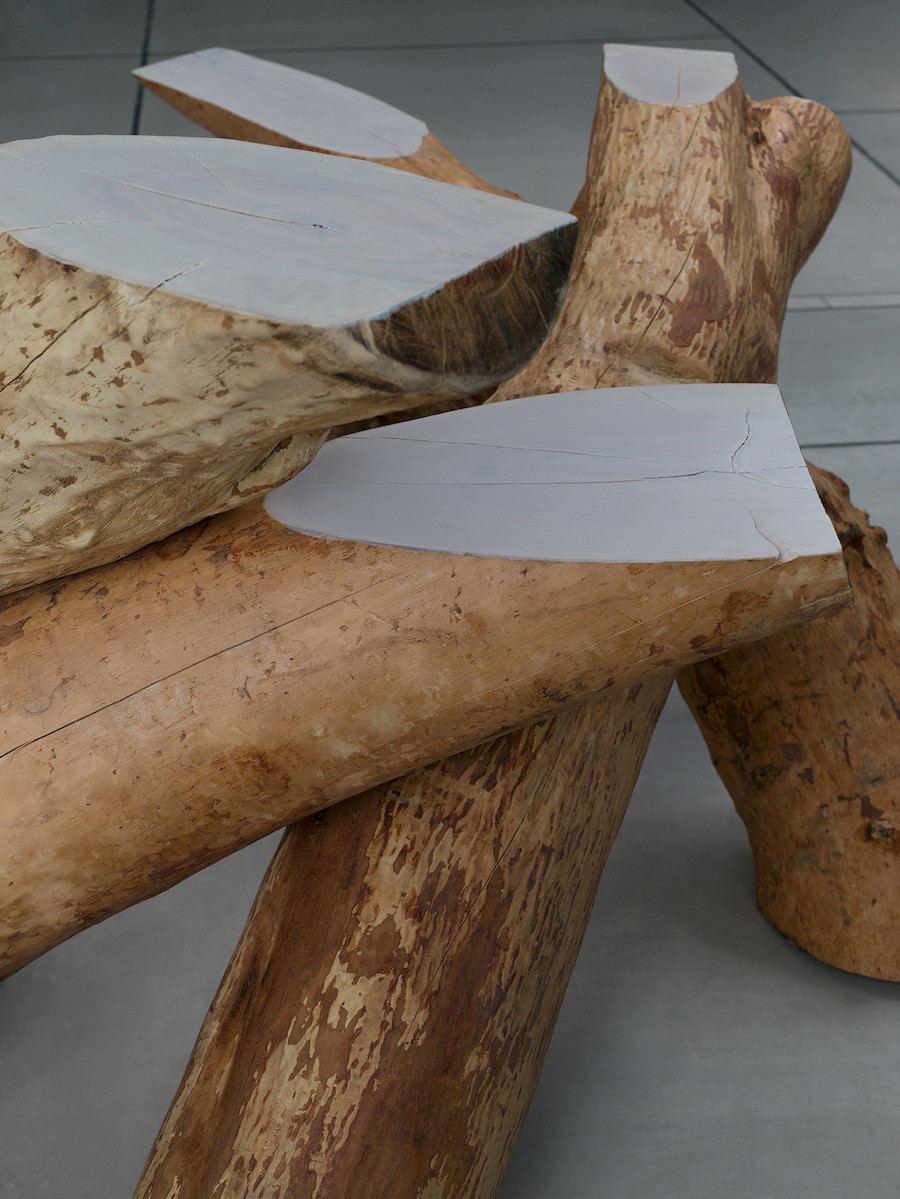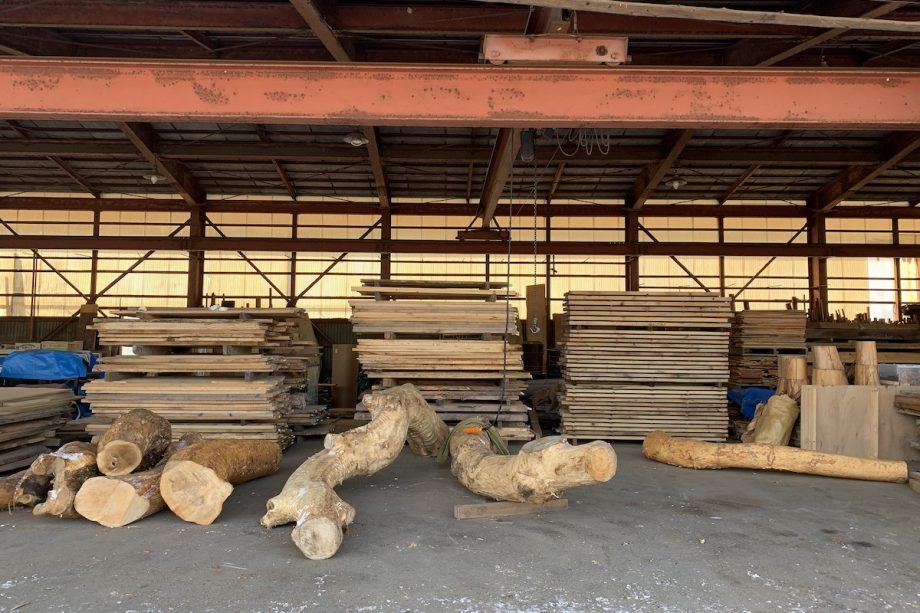Column
March 28, 2021
FabCafe Global Editorial Team
Outline
HIDAKUMA uses VR technology to turn the disadvantages of curved wood into an advantage
HIDAKUMA was established by Loftwork, the Japanese city of Hida, and Tobimushi, a local business unit, to promote the abundance of wood resources in Hida and connect local creators to encourage collaboration on various projects.
Under Loftwork’s creative community platform, the wood from Hida is utilized to its fullest potential through multiple creative methods, such as the virtual reality (VR) technology most commonly used in the game industry. In this project, AR technology is combined with industrial creation to create a work that is just like a piece of art.
Note: This article was taken from HIDAKUMA’s official website.
A bold architectural experiment
The natural curved logs of hardwood trees are extremely beautiful. The reasons for the special shapes vary; sometimes the branches and leaves gradually diverge while growing in order to absorb sufficient light, while in snowy countries, trees that grow on slopes have bent roots caused by the weight of the snow. The roots of coniferous trees will also bend under the pressure of accumulated snow, but the tree grows straight up to the sky due to apical dominance, when the roots rely on the central stem, which grows more strongly than other side stems.
In the past, the relationship between humans and the natural world was far more inseparable than it is today, and the unique shape of naturally curved logs was often used as the beams and pillars of buildings. However, as lifestyles changed, naturally curved logs are now often processed into scraps to create wood pulp for papermaking or fuel.
HIDAKUMA invited Akinori Hamada, an architect and computational design expert and Eri Sumitomo who studies methods for applying augmented reality (AR) technology to product manufacturing, as well as local masters in Hida to collaborate on a project that would both bring out and make use of the characteristics of naturally curved logs. Through the use of digital technology, they were able to establish new methods for processing and using the logs, creating “Torinosu,” a composite object supported by six logs and stands independently.
Torinosu is displayed on the terrace of the cafe BREAD, ESPRESSO & MEETUP in Miyashita Park. This article summarizes the production process that combined digital technology and master craftsmanship.
Project Overview
- Scope: Hardwood forest lectures, survey and procurement of naturally curved logs, design assistance, production and production management
- Dates: April ~ August 2020 (production period)
- Prepared by: Client: BREAD, ESPRESSO & MEETUP Cafe(Operating company: Jisoku 1 Jikan Ltd, HitoBito Ltd.)
- Design: Aki Hamada Architects
- Technical support: ERI SUMITOMO ARCHITECTS
- Production: Yanagi Mokuzai and Calm’s (Woodwork Studio)
- Cooperation units: Hida City Forestry Association and Okuhida Kaihatsu
Outputs
Design that attracts people and is open to interpretation
The composite object, Torinosu, stands independently, propped up by six curved wood reciprocal frames made out of six species of trees including water oak and Japanese hackberry. Naturally bent and twisted during the growing process, the wood – with its wave-like appearance – has an uncut wild beauty that calls for admiration and also an appeal that makes people want to reach out and feel its natural material.


The overlapping design and differing heights of the logs allow for flexible and diversified use. AR technology is used to create a flat surface so that it can also serve as a table.
Open to interpretation, Torinosu stands in front of BREAD, ESPRESSO & MEETUP. Often, cafe goers rest on it, passerbys sometimes lean on the surface to scribble down a quick note, and sometimes children climb all over it.
Torinosu was a project that pioneered many new practices, and from a product point of view, also showcases an unprecedented appearance of naturally curved logs.
※Mutual support structure: a structure that avoids multiple components all fixed at the same point and allows them to be supported by adjacent components instead
Specifications
- Materials: Oak, Japanese hackberry, Magnolia kobus, Giant dogwood, Birch and Magnolia hypoleuca
- Dimensions: W2580×D2660×H1090
- Surface treatment: Several layers of waterproof, insect-repellent, mildew proof, anti-UV and anti-crack coating such as Xyladecor wood stain and so on.
Process
Freedom to move heavy logs in the design process
n October 2019, HIDAKUMA brought Mr. Hamada to Hida to familiarize him with the area. At the time, they visited the Ikegahara forest, filled with red maple foliage, a woodworking factory, an architectural company that uses hardwood trees to build houses and other places. Afterwards, Mr. Hamada expressed his wish to try using naturally curved logs on the project. His goal was to not only to use the beautiful curves of the natural logs to produce a structure, but also to use digital technology to prove that utility can be achieved, no matter how distorted the natural logs were. With the help of Hida Forestry Association and Okuhida, they collected various curved natural logs from the forests in the Hida area.

-

Naturally curved wood in the storage yard
-

HIDAKUMA staff peeling tree bark to help ensure an accurate 3D scan
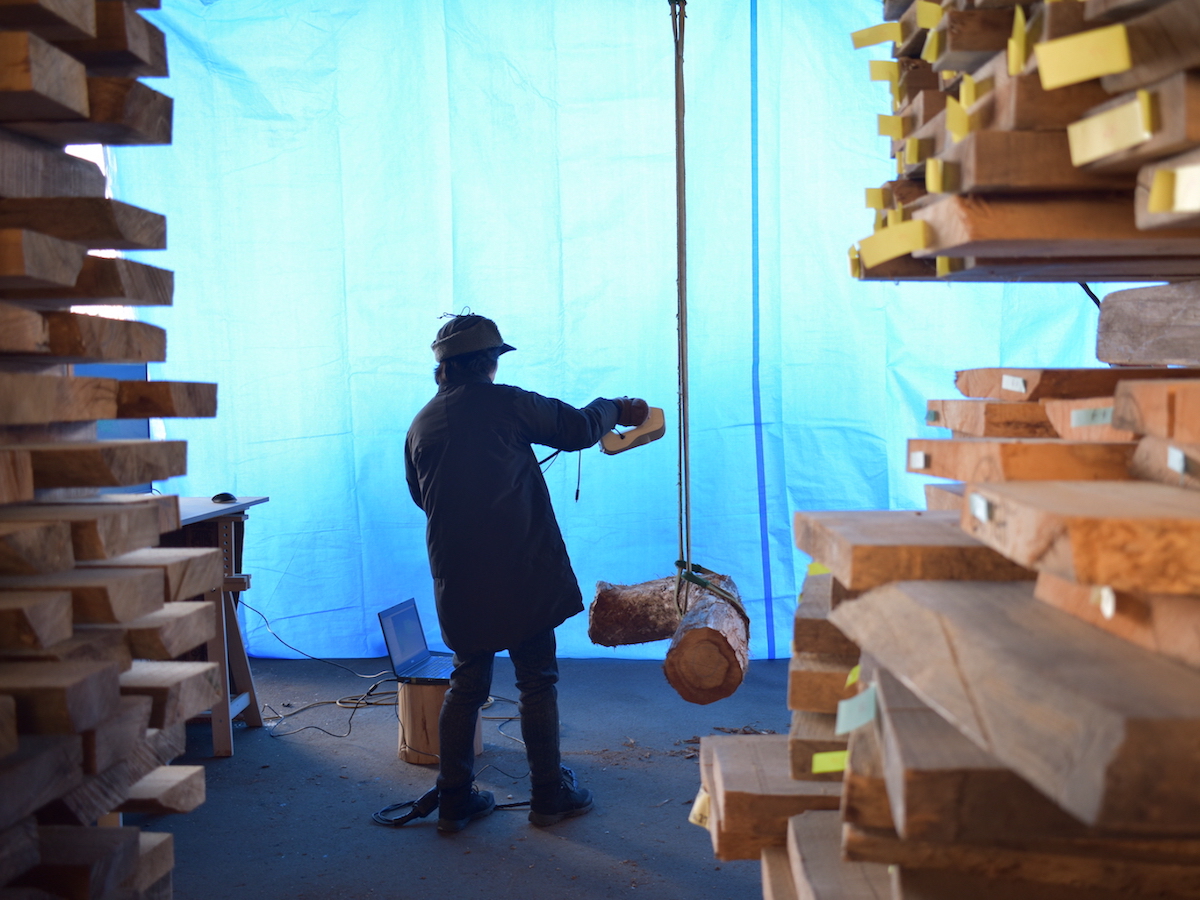
Because the surrounding light will affect the results of the 3D scan, blue tarp was used to prevent the light from entering before the scanning began.
In order to ensure that the curves of the wood were exhibited in the design and to create an innovative product, we first conducted a 3D scan of a cut natural log. Thanks to the 3D data, wood that weighed hundreds of kilograms could be freely moved and processed; the whole design and working process could be simulated in the digital space. Structural calculations could also be carried out according to the data. With the power of digital technology, the design layout of “Torinosu” was thus completed.
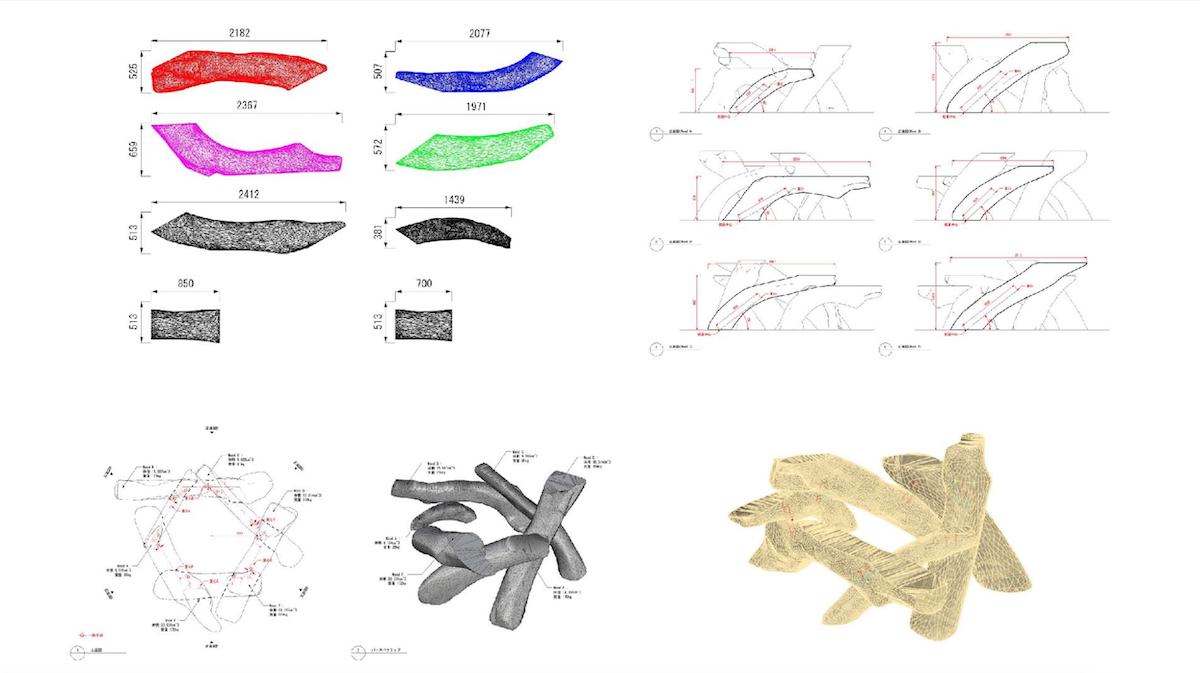
Source: Aki Hamada Architects Inc.
Overlaying The Virtual And Real Spaces
In accordance with the design layout, we chose to use an AR device named HoloLens during the processing. The shape of the device resembles protective goggles that allow virtual space to be overlaid on real space, which results in both virtual and real objects appearing in front of one’s eyes. In this project, HoloLens enabled cross sections to emerge in real space, guiding the processor.
During wood cutting, carpenters and furniture makers are usually required to make marks on the wood beforehand. However, correctly marking curved logs and using the marks to process the wood is certainly not an easy task. As such, we used HoloLens to make the marks digitally.
Naturally, the 3D marks made by the HoloLens don’t just show up in the real space. During processing, we needed to configure settings for the log’s coordinates to be added to the 3D data, and then in the real space, place the log on the coordinates. HoloLens allowed for the 3D data to appear in the real space, overlaying the physical log.
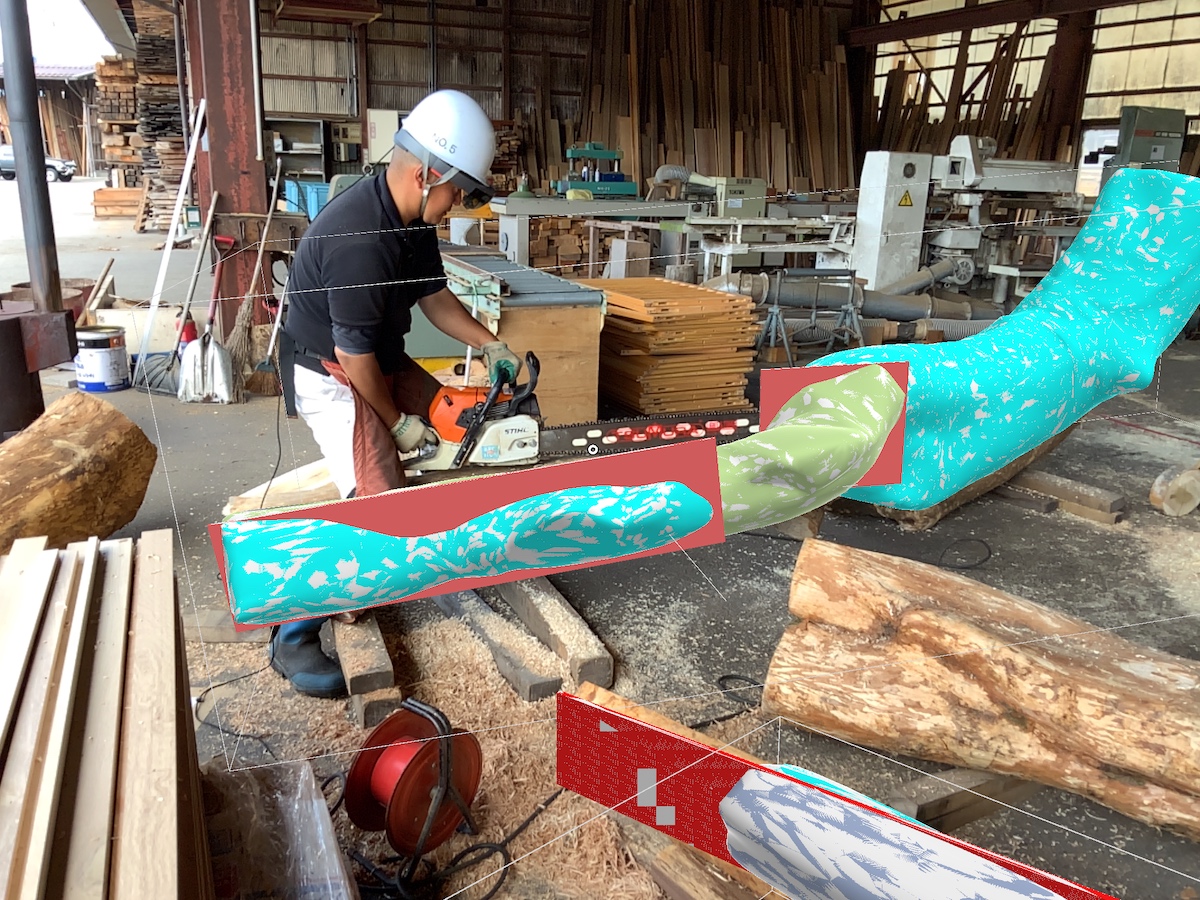
The virtual space overlaying the real space through the use of HoloLens.
Mr. Kazunori Yanagi, who runs the wood business Yanagi Mokuzai in Hida, was the one to wear the HoloLens and cut the logs. He used a chainsaw that has a blade length of 30 inches, which is longer than usual. Holding a chainsaw that is heavier than usual, he seemed a little nervous to attempt a new method of processing. Combining AR technology with chainsaws in processing wood is perhaps unprecedented in Japan, and even in the world world.
Hida Furukawa’s wood master Mr. Hisatoshi Katada was responsible for the drilling operations for the later stages of assembly. Cross intersecting the logs accurately is not easily improved by digital technology alone, and even though AR technology is used, it still required the help of Mr. Hisatoshi Katada’s exquisite skills.

Hida Furukawa’s wood master Mr. Hisatoshi Katada wearing the HoloLens and drilling the logs.
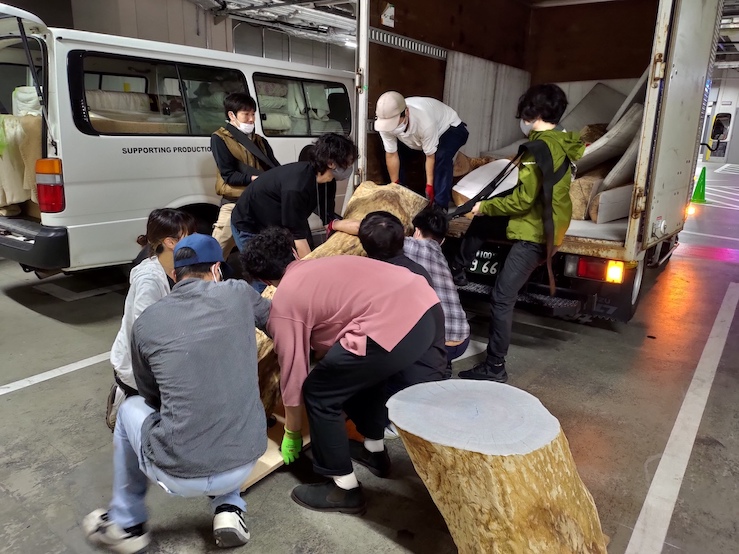
Logs can be easily moved on a computer, but a lot of people are needed to move them in reality. The actual moving and display process required a total of eight people. The assembly work was also carried out through HoloLens in order to complete Torinosu.

HoloLens was also used to guide the assembling work on site.
In the process of making Torinosu, digital technology was used to skillfully display the unique beauty of natural materials, in particular, naturally curved logs that were originally very limited in their application. In the future, HIDAKUMA will look to join hands with other partners from all over the world to come up with various unprecedented ways of using wood and putting them into practice.

-
FabCafe Global Editorial Team
This articles is edited by FabCafe Global.
Please feel free to share your thoughts and opinions on this article with us.
→ Contact usThis articles is edited by FabCafe Global.
Please feel free to share your thoughts and opinions on this article with us.
→ Contact us

